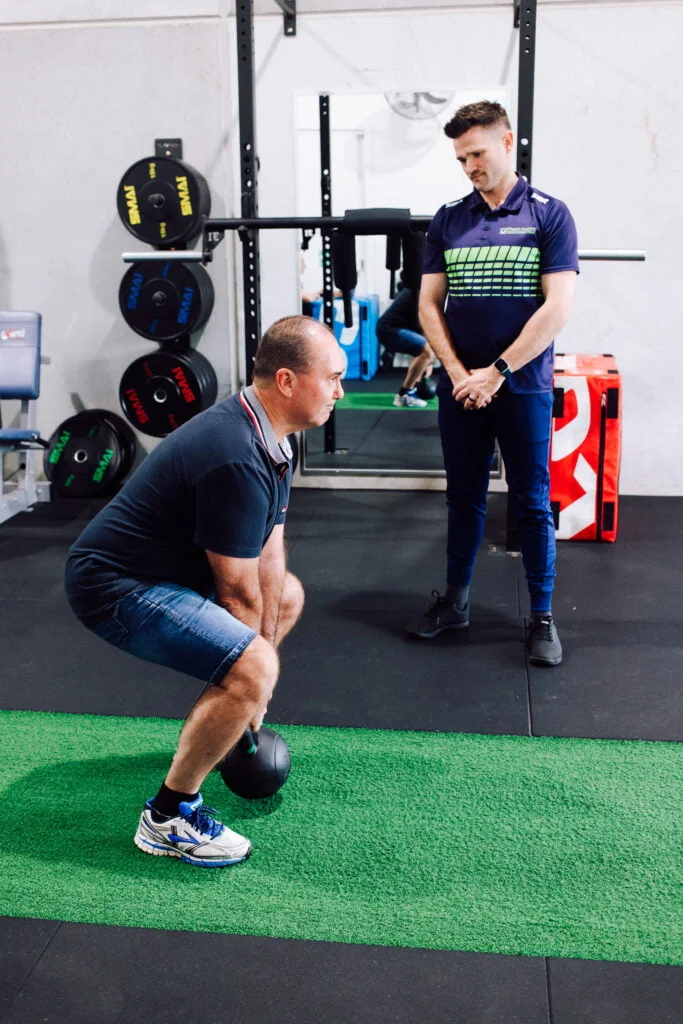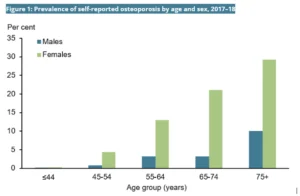Osteoporosis (porous bones) is a condition where the bones become brittle and weak. It can affect any bone in the body. People with this condition can suffer broken bones from a minor impact or accident (most common fracture sites are the spine, wrist, hip). Osteoporosis is rarely diagnosed before a fracture occurs; therefore, it is likely to be under diagnosed. Based on self-reported data from the ABS in 2017-18, there was an estimated 924,000 Australians diagnosed.
Risk factors associated with the development of osteoporosis include lifestyle factors: low intake of calcium, smoking, excess alcohol consumption, physical inactivity. There are also biological factors: increasing age, sex and family history of the condition.
(Figure 1: Source: AIHW analysis of ABS 2019a)
Exercise can help prevent and treat osteoporosis. Just like muscles, bones can adapt to the loading put on them from exercise and leads to an increase in bone density. Other benefits of exercise can include: improved balance, better lower extremity neuromuscular function and increased muscle strength – all playing a major role in falls prevention.
Exercise, when appropriately prescribed, can be an effective and safe treatment for most people with Osteoporosis. Exercise Physiologists (AEPs) are university qualified professionals equipped with the knowledge to design safe and effective exercise programs for people living with, or at risk of developing Osteoporosis. Aerobic weight bearing, balance and resistance exercise can be beneficial for those with Osteoporosis, the goal should be to start small and gradually build up time and intensity from there.
Thorough evidence-based pre-screening and relevant fitness testing is conducted onsite at our state-of-the-art functional rehabilitation facility to gain an understanding of all the health conditions you are living with, how they impact your life and your current level of fitness. Exercise prescription is individualised based on this information in addition to what your goals are.
It may be recommended to start with supervised sessions at our facility under the experienced eye of our Accredited Exercise Physiologists, Nathan Walker or Scott Howard, or your program can be designed to be performed from home. We utilise a free exercise software program called Physitrack, which can be downloaded to your smart phone or tablet, which gives you the ability to message your therapist directly with feedback about your exercises.
If you want to exercise or know someone who does but aren’t sure how to get started, please book an appointment with one of our AEP’s today. They can help show you how to use exercise to keep your body and mind, happy and healthy in the management of your Osteoporosis.
Sources:
https://www.aihw.gov.au/reports-data/health-conditions-disability-deaths/chronic-disease/overview


